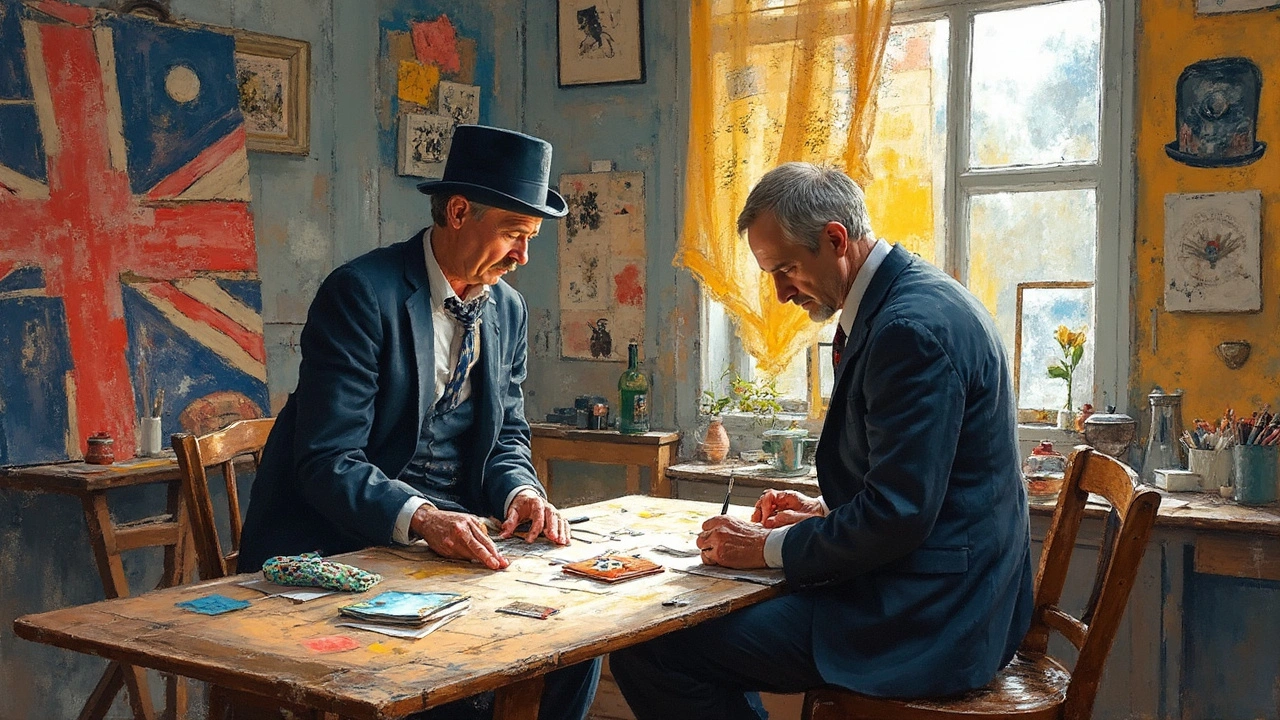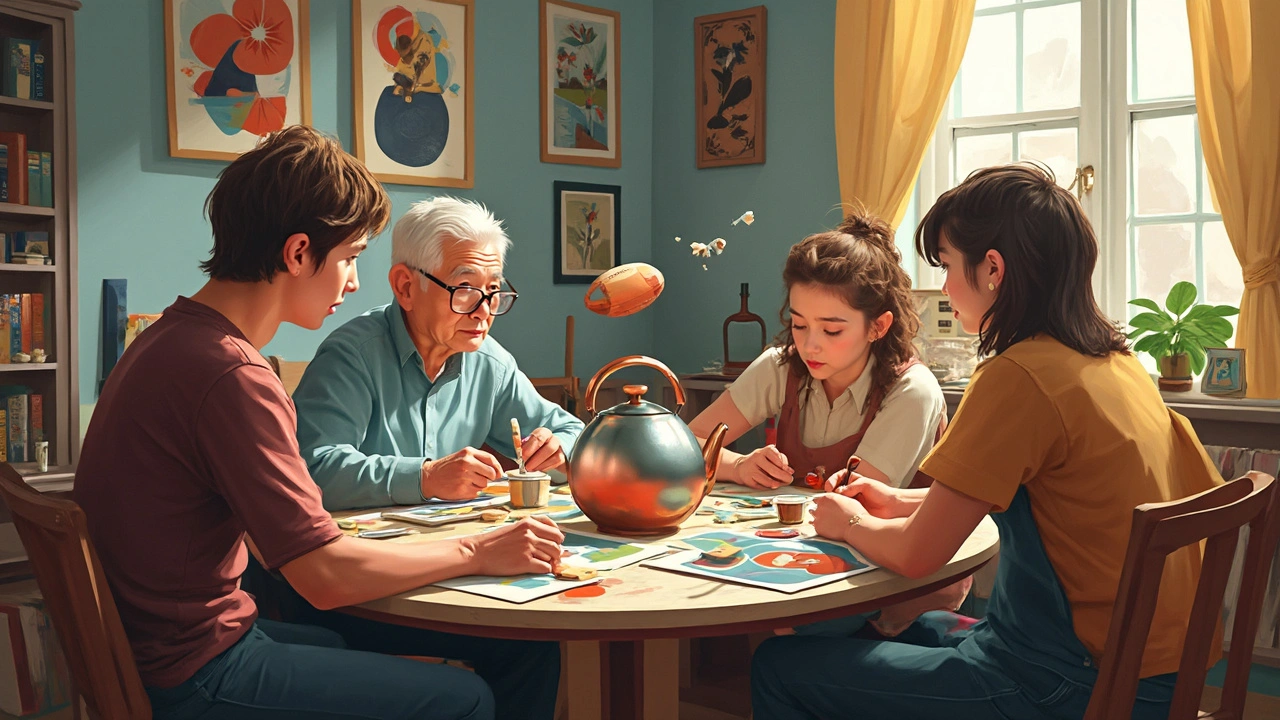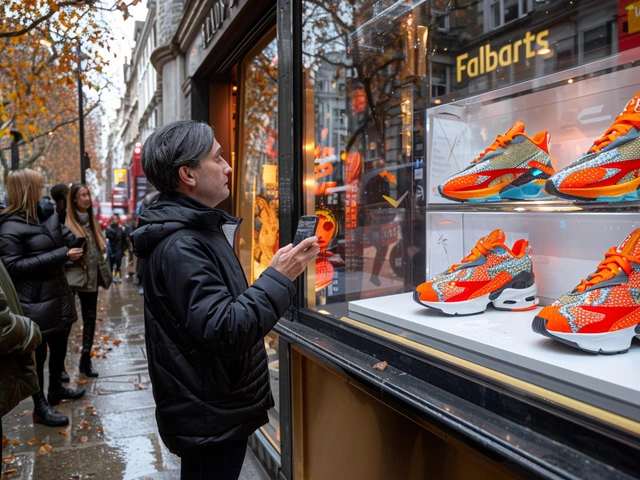Ever looked at a painting and thought, “Wait, is that a face or a pile of blocks?” That’s the magic of Cubism. This art movement didn’t just bend the rules; it threw them out the window. Suddenly, apples weren’t round, guitars had edges, and faces could be seen from the side and front at the same time.
So why does Cubism matter? It’s like the original ‘hack’ for seeing the world in new ways. People used to expect art to look real—almost like a photo. Then Cubist artists started slicing up space, mixing different viewpoints in one picture, and showing things you’d never notice in real life. If you want to really ‘get’ modern art, Cubism is the best place to start.
And no, it’s not as confusing as it looks. Once you know what to look for and why they did it, you might even start spotting Cubist ideas in design, ads, and street art today. Ready to see how art got turned on its head?
- Why Cubism Broke All the Rules
- The Artists Who Started the Chaos
- Spotting Cubist Art: What to Look For
- How Cubism Changed the Way We See
- Trying Cubism Yourself: Simple Tips
Why Cubism Broke All the Rules
Cubism didn’t sneak into the art world quietly. It stomped in around 1907, basically telling everyone, “Hey, you’ve been painting the wrong way.” For centuries, artists tried to copy what they saw—perfect light, perspective, shading. Cubists decided that was boring. Instead of copying real life, they wanted to show every angle at once. That’s why Picasso’s paintings look like jigsaw puzzles thrown together.
Georges Braque and Pablo Picasso are the two names that come up first. They wanted to break things down to their simplest shapes. Instead of showing just one side of a bottle or a person, they shattered it into pieces, like looking at a collage from a bunch of different viewpoints. For them, the 'truth' of an object wasn’t just how it looked from the front. This was a big shock—imagine if someone showed you a selfie with your ear, nose, and eyes all shuffled around.
The Cubists didn’t use traditional depth or shadow. No fancy backgrounds or perfect faces. Most of their paintings barely used color at first, sticking to browns and grays. This style was so wild at the time, newspapers and critics called it “cubes” to joke about how blocky everything looked. That’s literally where the name ‘Cubism’ comes from.
They also ditched the normal way of creating space. Instead of a painting that pulled you in, they kept everything on the surface. There’s no 'window' into the world—what you see is what you get. This really annoyed the old-school crowd, but it opened up art to crazy new ideas.
- First Cubist works showed up in Paris between 1907 and 1914.
- Early Cubist art uses mostly muted colors, only adding bright ones later.
- Instead of using shadows for depth, Cubists rearranged space using sharp lines and overlapping planes.
To get a sense of just how big a switch this was, check out this quick table:
| Before Cubism | With Cubism |
|---|---|
| One viewpoint per painting | Multiple viewpoints at once |
| Focused on looking "real" | Broke things down to shapes and flat surfaces |
| Lots of color, detail, shading | Muted colors, blocks, strong lines |
The whole idea was to smash expectations and see things differently. That’s why cubism still stands out, even in a world crowded with wild art movements today.
The Artists Who Started the Chaos
If you want to blame anyone for turning painting into a puzzle, it’s Pablo Picasso and Georges Braque. Back in the early 1900s, these two started messing around with shapes and viewpoints in a way that made the art world do a double take.
Picasso kicked things off with his painting “Les Demoiselles d’Avignon” in 1907. This wasn’t just another group portrait—the faces looked like African masks, the bodies were broken into flat, sharp shapes, and you couldn’t really tell who was standing where. People were shocked. Some even called it ugly at first. But Picasso’s bold move got everyone talking, and a new movement was born.
Georges Braque jumped on board soon after. He and Picasso pretty much worked side by side for a couple of years, bouncing ideas back and forth. They stripped down objects—guitars, bottles, tables—to their most basic parts. They called it the “analytic” phase of Cubism, which just means they kept breaking things down until only the essentials were left. If you see a painting that looks like a pile of little cubes or slices, you’re probably looking at early Cubism.
Let’s not forget other names who quickly got into the act. Juan Gris brought a bit more color and order to Cubism, making things a little easier on the eyes. Fernand Léger and Robert Delaunay joined in too, adding their own twists. But nine times out of ten, you start with Picasso and Braque if you’re talking about Cubism’s wild beginning.
The bottom line? These artists weren’t trying to be confusing for the sake of it. They genuinely wanted to shake things up and show the world in a way nobody had seen before. And thanks to them, cubism is now front and center in every art history class and museum tour worth its salt.

Spotting Cubist Art: What to Look For
Want to recognize a real cubist painting when you see one? There are a few sure signs that you’re looking at Cubism and not just any old modern art. The big clue is how stuff looks broken up—almost as if someone took an object apart and put it back together with the pieces in odd places. This method is called "fragmentation." You’ll start to see objects and people that don’t look quite right, and that’s on purpose. It’s not meant to be realistic; it’s all about showing multiple angles at once.
Here are some dead giveaways that you’re looking at cubism:
- Geometric Shapes Everywhere: Forget realistic curves. Cubists use cubes, rectangles, and triangles—even for faces and fruit.
- Muted or Earthy Colors: Early Cubists like Picasso and Braque stuck with browns, greys, and greens, especially in their "Analytic Cubism" period.
- Flattened Space: No depth, no shadows like in a classic painting. Everything feels pushed up to the front, making it look flat.
- Overlapping Views: One object might have both a side view and a front view in the same part of the painting. It’s like seeing an x-ray and the outside of something at the same time.
- Collage and Texture: In the later "Synthetic Cubism" phase, artists started gluing things like newspaper, wallpaper, and even pieces of cloth onto their paintings.
Here’s a quick cheat sheet comparing real Cubism with other common painting styles:
| Style | Main Visual Signs | Usual Subjects |
|---|---|---|
| Cubism | Geometric shapes, multiple angles, muted colors, flat space | Still life, portraits, musical instruments, bottles, newspapers |
| Impressionism | Fast brushstrokes, bright colors, natural light | Landscapes, outdoor scenes, people |
| Realism | Detailed, lifelike, true-to-life colors, clear perspective | Everyday moments, nature, people |
If you ever get stuck, just check if the painting looks more like building blocks than something out of a photo. And if you spot newsprint or bits of wallpaper actually stuck in the painting, you’re holding a piece of art history—Synthetic Cubism at work. Next time you visit a museum, see if you can pick out these features. Once you know these tips, Cubist paintings really jump out at you.
How Cubism Changed the Way We See
Before Cubism, most artists aimed to paint the world as the eye sees it—one angle, one moment, one tidy picture. Cubism shattered all that. Suddenly, painters like Picasso and Braque started showing objects from multiple viewpoints at once. They broke things down into simple shapes and made you notice new details you’d usually miss. This was a radical shift. Art was no longer just about copying reality—it was about rethinking it.
One big thing Cubism did? It pushed everyone to question what art could be. For example, in Picasso’s "Les Demoiselles d’Avignon" from 1907, faces are jagged and bodies are twisted—not because Picasso messed up, but because he wanted to show more than just one angle. It made viewers stop and really look. Nothing was straightforward anymore.
Even outside museums, cubism changed graphic design, fashion, and even architecture. Think of those crazy, angular buildings or funky logos where shapes fit together in unexpected ways. That’s the Cubist lens at work.
Cubism also brought attention to how we see time and space. Instead of a single snapshot, you got a bit of everything—like looking at your coffee cup from above, below, and the side, all at once. This forced your brain to work harder and think differently about everyday things.
Check out these quick facts that highlight the shift Cubism caused:
| Before Cubism | After Cubism |
|---|---|
| Single viewpoint, realistic perspective | Multiple views, broken-up forms |
| Focus on lifelike details | Emphasis on shapes, lines, and angles |
| Clear, separate objects | Overlapping and blending shapes |
| Paintings as windows to the world | Paintings as objects to puzzle over |
Feeling stuck in your way of seeing things? Try this: next time you look at something simple—a fruit bowl, a chair—imagine drawing it from several angles at once. Break it down into squares, triangles, or even cubes. That’s how Cubist artists forced minds open, and it’s a trick anyone can play with today. You’ll start noticing the world’s weird and interesting fragments the way the groundbreaking Cubists did over a hundred years ago.

Trying Cubism Yourself: Simple Tips
If you’re itching to try Cubism at home, here’s the good news: you don’t need fancy gear or an art degree. The big thing with cubism is breaking down what you see into simple shapes—think cubes, triangles, circles—and showing more than one viewpoint at the same time. Picasso and Braque used plain old charcoal and newsprint at first. So you can totally do this with what you have lying around.
Start by picking a normal thing to draw, like a coffee mug or a guitar. Sketch it how you usually would—this helps you see the basics. Now, try these steps:
- Break it Down: Forget about smooth curves. Draw the object using overlapping geometric shapes. Even a banana can look wild when you chop it into slices of triangles and rectangles.
- Show Different Angles: Draw the front, side, and maybe even top view in the same sketch. Cubists loved showing ‘multiple realities’ in one place.
- Mix It Up: Cut your drawing apart and glue it back together differently. Or, use colored pencils and shade each shape in its own color or pattern.
- Keep It Simple: Early Cubist work was all about less is more. Lots of white space or muted backgrounds let your broken-up object stand out.
Georges Braque once said,
"Cubism is a sort of mathematics of art; it subjects forms to intelligent, reasoned dissection."
If you’re stuck, try looking at paintings like Picasso’s “Still Life with Chair Caning” or Braque’s “Violin and Candlestick.” Both show basic objects cracked into chunks and scattered over the canvas. You can even use your phone—snap a picture, open it with a drawing app, and trace straight lines and shapes over it. It’s a fun way to get the Cubist look before messing with real supplies.
If you want to level up, play around with collage. Cut magazines or colored paper into shapes and arrange them into something familiar but odd. Glue them down in a way that your eye can’t quite settle—just like in real Cubist art. There’s no wrong answer. The goal is to make your brain do a double take.
The best part? Nobody’s grading you. Mess around, try weird combos, and get a little wild. Even if you just stick with it for an hour, you’ll see objects in a totally new way. That’s the real magic behind Cubism—and you can do it right at your kitchen table.




